By Russ:
A multi-talented songwriter and producer, he worked with Olivia Newton-John from 1971 to 1989 and wrote her number-one hit singles: “Have You Never Been Mellow” (1975), “You’re the One That I Want” (1978 duet with John Travolta), “Hopelessly Devoted to You” (1978), and “Magic” (1980).
John Farrar, as a guitarist, was a former member of several rock and roll groups including The Mustangs (1963–64), The Strangers (1964–70), Marvin, Welch & Farrar (1970–73), and The Shadows (1973–76).
According to AllMusic Farrar has been credited on many studio albums with: vocals (lead, backing), guitars (lead, rhythm, bass guitar, acoustic, slide guitar, acoustic slide, electric slide), piano (electric), keyboards, mellotron, synthesizer, vocoder, synclavier, mandolin, and horn.
Farrar’s work with Newton-John embraced a wide range of styles. They were both really hitting their peak with the “Totally Hot” album, the Xanadu soundtrack and Newton-John’s Physical.
John Farrar
Because of the tight working relationship between Newton-John and Farrar, this post will include a lot of Newton-John material.
Videos:
You’re The One That I Love / written by John Farrar
.
Hopelessly Devoted To You / written by John Farrar
.
Magic / from the movie Xanadu / written by John Farrar
.
1981 / Physical / album / produced by John Farrar
Early Years
John Clifford Farrar (pronounced Fare-ah) was born in Melbourne, Australia in November 8, 1946. He took up the guitar at age 12, in 1957, just as rock & roll was making itself felt in Australia.
Fast forward to 1961 and he was gigging at age 16 with local rock bands in Melbourne. With fame and fortune far off in the future, Farrar thought he’d wind up being an obscure guitar player toiling away at equally obscure, out of the way venues.
But then in 1964, as fate would have it, Farrar was offered a big opportunity to replace the lead guitarist in a Melbourne band, The Strangers.
The Strangers was already a very popular group in Melbourne; they had made a name for themselves over the previous three years doing a brand of instrumental rock heavily influenced by their idols, the legendary English quartet the Shadows. The Strangers got to play with visiting American artists Roy Orbison and Paul & Paula, and they shared the bill with the Surfaris and the Beach Boys.
The next big break came when The Strangers were chosen as the resident backing band on the Melbourne-spawned youth-oriented television series The Go!! Show. The Strangers became a popular backing and session band.
The Newton-John :: Farrar Connection
As luck would have it, both Farrar’s future wife, Pat Carroll, and their close friend, Olivia Newton-John, appeared on The Go!! Show as singers backed by The Strangers. Carroll and Newton-John had formed a vocal duo, “Pat and Olivia”.
In 1967 “Pat and Olivia” did a tour of the United Kingdom, including a gig at the infamous Raymond Revuebar club in Soho. After returning to Australia from the tour, Carroll was obliged to remain since her work visa had expired, while Newton-John was able to stay on due to her British origins.
Farrar dated Pat Carroll and married her in 1970. Following their wedding, Carroll ceased to pursue headliner status. She occasionally reprised the duo with Newton-John, and worked as a session singer on Farrar’s or Newton-John’s work.
Farrar and The Shadows
During 1968, The Strangers supported the Australian leg of a tour by playing along side their idols, The Shadows, who met Farrar and they were suitably impressed with his talent.
At the invitation of Marvin and Welch of the Shadows, Farrar left Australia in 1970 and headed to Britain. They would ultimately record six albums together.
In July 1970, Farrar packed it in with the Strangers and left Australia with Carroll for Britain. Around that time, the Shadows (led by guitarists Hank Marvin and Bruce Welch) went on hiatus. Ever since their emergence in 1958 as a recording act with Cliff Richard, they’d been known primarily as an instrumentals band. They were living in Cliff’s shadow (haha).
Marvin and Welch decided to try reinventing themselves as a vocal group specializing in harmony. But for 3-part harmony they needed a third member and Newton-John — who by then had met and become engaged to Bruce Welch — brought up the name John Farrar. They invited Farrar to join them and they became Marvin, Welch & Farrar.
The trio of Marvin, Welch & Farrar‘s self-titled album was released by EMI Records around February 1971.
The group recorded two more albums, Second Opinion and a self-titled duo album, Hank Marvin & John Farrar, which was released by EMI/Capitol around June 1975.
When their efforts at redefining themselves fizzled, Marvin and Welch decided to reactivate The Shadows as a full-time performing unit and Farrar was folded into their new, expanded five-man lineup as a second lead guitarist.
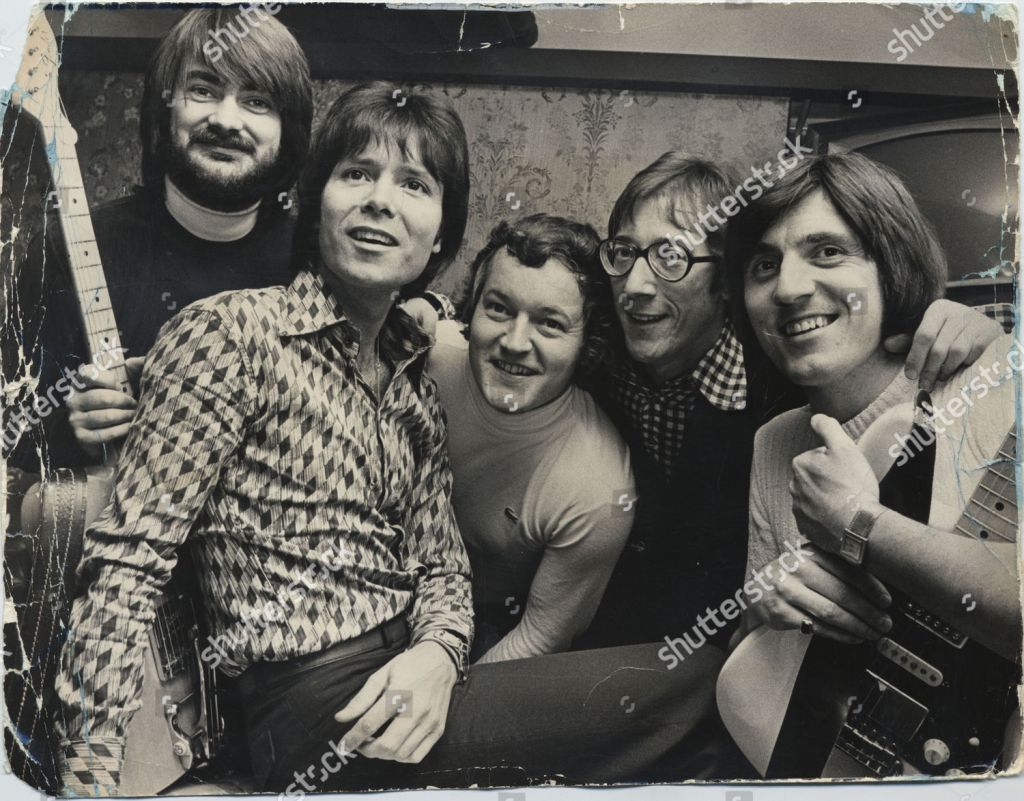
They were also able to incorporate some of their vocal efforts from the trio into the group’s sound, and Farrar’s skills as an arranger further expanded the Shadows‘ sound across this period.
From 1971 to 1976, various members of The Shadows were employed as session musicians for Newton-John’s early albums, recorded at London’s Abbey Road Studios. Aside from Farrar and Welch, they included Brian Bennett, Alan Hawkshaw, Alan Tarney, Dave Richmond, and Trevor Spencer; some other session musicians were the fellow Australians Kevin Peek and Terry Britten.
—
In 1971 Farrar and his wife moved to England and by that time, Newton-John and Welch were engaged. Almost “related”, Farrar and Welch began making recordings for Newton-John. They became two of her main songwriters and producers. They co-produced and performed on Newton-John’s cover of Bob Dylan’s “If Not for You“. This single was a hit in the U.K. and the U.S. in September 1971. The track was also a huge country music hit, laying the foundation for Newton-John’s future multi-market crossover acceptance.
Meanwhile, Farrar remained busy on a second musical front, even as the Shadows resumed recording and touring, as Olivia Newton-John’s career took off. The success of “If Not for You” generated interest in the singer from American labels. In 1971 she signed with MCA Records, and the If Not for You LP was issued on MCA’s Uni label in November 1971.
In 1973 Farrar and Walsh co-produced another single “Let Me Be There” climbed to number six pop and Top Ten country, becoming Newton-John’s first gold single. This cross-over song definitely had a Country feel.
Another song called “I Honestly Love You“, originally intended as a cut on Peter Allen’s A&M Records debut album, was discovered by Farrar, who found the piano/vocal demo tape in a bag stuffed with unsolicited tapes from aspiring songwriters. Co-written by Peter Allen and Jeff Barry, “I Honestly Love You” was recorded by Newton-John and went number one pop in October 1974. (Allen would record the song some years later.)
In 1974, Farrar used the vocoder “SFX unit” on an instrumental track, “No, No, Nina“, long before Peter Frampton’s 1975 single, “Show Me the Way“, which featured the same device for its talk box effect.
Farrar’s track was held back from release by EMI until 1997, when it appeared on the CD album, The Shadows at Abbey Road, containing mostly unreleased material. Aside from instrumentation and vocals,
Farrar worked as an arranger on The Shadows’ albums: Rockin’ with Curly Leads, Specs Appeal, Tasty and Live at the Paris Olympia.
Farrar wrote Newton-John’s next chart-topper during her first American tour while he was looking for musicians to back her in Minneapolis. In a nearby conversation, he overheard the word “mellow” spoken frequently. It sparked his muse and he wrote “Have You Never Been Mellow“. Neither Farrar nor Newton-John believed it would be a hit, but it glided up to number one pop on March 8, 1975.
Other Newton-John hits from 1975 included Farrar’s “Something Better to Do” (number 13 pop).
The Have You Never Been Mellow album (February 1975) hit number one pop on the LP chart. Farrar and his wife relocated to the United States that year, in the wake of Newton-John’s earlier move. And late in the year he parted company with the Shadows, following a string of successful albums and singles, culminating with the Live at the Paris Olympia concert recording. His departure resulted in the Marvin, Welch & Farrar vocal numbers being dropped from the group’s live sets, and their return to being almost exclusively an instrumental group.
Come On Over was the eighth studio album by Olivia Newton-John, released on 29 February 1976. It peaked at number 2 on the US Country albums chart, and number 13 on the Billboard 200.
1976 / It’ll Be Me / from the Come On Over album / written by John Farrar
In May 1976 Newton-John’s “Come on Over” became her first number one country single and went to number 23 Pop and earned gold certification.
Released in the late summer of 1976, “Don’t Stop Believin’” settled at number 33 pop and the album of the same name (October 1976) became Newton-John’s sixth consecutive gold album.
But by now, the Farrar/Newton-John team were feeling that their overall MOR/easy listening audience was shrinking and that they were beginning to stagnate creatively. They contemplated taking their music in an edgy, more rock & roll-based direction.
Soon afterward, Newton-John ran into film producer Allan Carr at a dinner party. Carr asked her to take the role of Sandy opposite John Travolta in his major movie adaptation of the stage hit Grease.
Farrar’s biggest successes with Newton-John as writer-producer came with the film version of the musical Grease in 1977 — after Olivia was selected for the lead role of Sandy.
It was during filming, producers realized that the original score of the musical was too short to bring the film to regular feature length, and that several extra songs were needed, so Farrar wrote and submitted two original songs, “Hopelessly Devoted To You” and “You’re The One That I Want”. Both were accepted and incorporated into the movie and they proved to be two of the most successful songs on the soundtrack, with both tracks becoming major international hits when released as singles during 1978.
The first single from the soundtrack, “You’re the One That I Want” by Travolta and Newton-John, went all the way to number one pop in June 1978. In England, the single held the number one spot for nine weeks. Topping the LP charts that same year, the Farrar-produced Grease movie soundtrack was one of the first multi-platinum albums. The mega-hit movie’s soundtrack spawned a slew of hit singles.
Right after Grease, around November 1978 came Newton-John’s next MCA album, Totally Hot, which had a harder rockish edge than her past offerings, no doubt from the influence of Farrar and Newton-John’s experience working on the Grease soundtrack.
Dressed on the album cover all in leather, Newton-John’s transformation was seen to mirror her character Sandy’s transformation in Grease.
1978 / Totally Hot / written by John Farrar
1978 / A Little More Love / from the Totally Hot album / written by John Farrar
Besides working with Newton-John, Farrar was busy in many other projects. In 1978 he produced the State Of Shock album for the Moir Sisters on Rocket Records/MCA.
Newton-John’s second film, Xanadu, was a commercial flop in 1980, but the soundtrack that was co-written and produced by Farrar and Jeff Lynne of ELO went platinum.
Like the Grease soundtrack, there were a number of hit single spinoffs. Farrar’s “Magic” moved into the number one position on the pop charts for four weeks starting in August 1980, giving Newton-John her third number one single.
1980 / Magic / written by John Farrar
That same year, Columbia Records released Farrar’s solo self-titled debut in November.
As the ’80s got underway, Newton-John slowly began to shed her squeaky-clean image — but nothing could have prepared her fans for what was coming next. At the height of the fitness craze, the Farrar/Newton-John duo performed a stroke of genius. “Physical,” written by Steve Kipner and Terry Shaddick, was produced by John Farrar and it was the perfect match of sweaty pro-exercise sentiments and sexual innuendo.
Not only did Farrar produce the Physical session. He is also credited with guitars, bass guitar, background vocals, OBX, syntheizer and vocoder. In fact, Farrar had started using a vocoder “SFX unit” in 1964 on an instrumental track, “No, No, No, Nina” before Peter Frampton’s 1965 single, “Show Me The Way“, which featured the same device for its talk box effect.
“Physical” pumped its way up to number one pop, staying in place for an astounding ten weeks beginning November 21, 1981. Simultaneously, her fourth ABC-TV special, Olivia Newton-John: Let’s Get Physical, was aired. There was some controversy about the song’s lyrics and the record was banned by some stations. None of this stopped the momentum, as both the single and the Physical album went platinum. The single received strong airplay on urban radio stations as well.
Farrar’s last production for Newton-John was her album, Warm and Tender in 1989.
In the mid-1990s, Farrar collaborated with Newton-John and lyricist Tim Rice, writing the score of Cliff Richard’s musical Heathcliff based on the Emily Brontë novel Wuthering Heights. The musical opened on 16 October 1996, having raised considerable interest from the media regarding Cliff Richard playing the dark, barely civilized character.
Heathcliff played to audiences of close on half a million people, and broke box office records at almost every theatre at which it played.
Songs from Heathcliff is a studio album by Cliff Richard, released in October 1995. It features ten songs from Richard’s self-conceived musical Heathcliff. The music was composed by John Farrar with lyrics written by Tim Rice. Olivia Newton-John is a guest on the album, featuring in five duets with Richard. The style of the music ranges from pop/rock to mock-period music, featuring instruments such as the harpsichord and violin.
Four singles were released from the album.
- The lead single, “A Misunderstood Man“, peaked on debut at number 19 in the UK Singles Chart, but suffered from a lack of airplay on radio (including from BBC Radio 2) and television.
- The second single, “Had to Be“, a duet with Newton-John, reached number 22.
1995 / Had To Be / Cliff Richard and Olivia Newton-John / written by John Farrar
Farrar has reportedly been semi-retired since then, though his past work — in association with Marvin, Welch & Farrar, the Shadows, and Newton-John — continues to be unearthed and reissued anew in the 21st century.
In June 2004, Farrar recalled writing the two songs: “‘You’re the One That I Want’: The weird thing was it was the fastest song I ever wrote. It came so fast, the actual melody and the feel of it. ‘Hopelessly Devoted To You’: I spent the longest period writing the lyrics of any song I’ve ever written. Every thesaurus and every rhyming dictionary I had, just trying to really make it work properly“.
Other number-one hits for Newton-John that were written and produced by Farrar are “Have You Never Been Mellow” (1975), “Don’t Stop Believin’” (an easy-listening chart-topper from 1976, not the Journey song of the same name), and “Magic” (1980).
Farrar produced one side of the Xanadu soundtrack for the 1980 film of the same name. The other side featured tracks by Electric Light Orchestra and was produced by their guitarist-vocalist, Jeff Lynne. In March 1981, Farrar was nominated for a Golden Raspberry Award for Worst Original Song for the song “Suspended in Time” from Xanadu.
Personal life
In 1969 Farrar married fellow Australian singer, Pat Carroll formerly Newton-John’s singing partner. In July 1970 Farrar and Carroll relocated to the United Kingdom and by late 1975 they resided in the United States. They are the parents of Sam Farrar (born 29 June 1978, Phantom Planet bass guitarist) and Max Farrar (Golden Ghost guitarist and keyboardist). As of April 2012 Farrar and Carroll reside in Malibu, California.
Instruments
According to Allmusic John Farrar has been credited with: vocals (lead, backing), guitars (lead, rhythm, bass, acoustic, slide, acoustic slide, electric slide), piano (electric), keyboards, mellotron, synthesiser, vocoder, synclavier, mandolin, horn.
Guitars Fender Stratocaster (white) – (early 1960s)
Maton El Toro (Electro Longhorn lookalike) – (mid- to late 1960s)
Rickenbacker (both 6- and 12-string) – (mid- to late 1960s)
Epiphone Casino – (mid- to late 1960s)
Martin D-28 – (1970–75)
Les Paul – (1970–75)
Fender Telecaster thin-line with 3 Bigsby pedals – (1973–75)
Klein – solo
SFX Schaller Rotor-Sound
Vocoder
Amplifiers Arbiter (head)+post-Jennings Vox Amps (cabinet)
Discography
As a performer
Solo John Farrar – LP/CD – CBS/See 4Miles (November 1980)
“With Rainine on My Mind” – 7″ – Fable
“John and Mary” – 7″ – Fable
“Reckless” – duet with Olivia Newton-John (2009).
The Strangers
Main article: The Strangers (Australian band) § Discography
Marvin, Welch & Farrar
Main article: Marvin, Welch & Farrar § Discography (MW&F)
The Shadows
Main article: The Shadows discography
As a songwriter and/or producer
With Olivia Newton-John
1971 If Not for You (co-produced with Bruce Welch)
1972 Olivia (co-produced with Welch)
1973 Let Me Be There
1974 Long Live Love
1974 If You Love Me, Let Me Know
1975 Have You Never Been Mellow
1975 Clearly Love
1976 Come on Over
1976 Don’t Stop Believin’
1977 Making a Good Thing Better
1977 Olivia Newton-John’s Greatest Hits
1978 Grease (co-produced with Louis St. Louis, Barry Gibb, Albhy Galuten, Karl Richardson)
1978 Totally Hot
1980 Xanadu (A-side only, ELO member Jeff Lynne produced the B-side)
1981 Physical
1982 Olivia’s Greatest Hits Vol. 2
1985 Soul Kiss
1989 Warm and Tender
1978 “A Little More Love”
1980 “Suddenly”
Other production credits[15] Neil Sedaka – Workin’ on a Groovy Thing (1969) (arranger)
The Moirs – State of Shock (1978)
Cher – I Paralyze (1982) (co-produced with David Wolpert)
Irene Cara – Carasmatic (1987)
Jack Wagner – Don’t Give Up Your Day Job (1987)
Hit records 1972 If Not for You
1973 Let Me Be There (album) No. 6 American pop chart; No. 1 country music chart
1974 If You Love Me, Let Me Know No. 5 Pop; No. 1 Country
1975 Have You Never Been Mellow No. 1 Pop
1975 Have You Never Been Mellow (LP) No. 1 American pop album chart
1975 Please Mr. Please No. 3 Pop
Something Better to Do No. 13 Pop
1976 Come on Over No. 1 Country; No. 23 Pop
1976 Don’t Stop Believin’ No. 33 Pop
1978 Grease (soundtrack) multi-platinum
1978 “You’re the One that I Want” No. 1 Pop US; No. 1 Pop UK
1978 “Hopelessly Devoted to You” No. 3 Pop US; No. 2 Pop UK
1978 “A Little More Love”; No. 3 Pop
1978 “Deeper than the Night” No. 11 Pop
1980 Xanadu (soundtrack) (A-side) No. 1 Pop on the LP chart; platinum
1980 Magic No. 1 American pop chart
1981 Physical No. 1 Pop, 10 weeks
1982 Make a Move on Me No. 5 Pop
1982 Heart Attack No. 3 Pop
1983 Twist of Fate” No. 5 Pop
Eurovision Song Contest appearance
1973 “Power to all Our Friends” (backing Cliff Richard).
1974 “Long Live Love” (producer to Olivia Newton-John)
1975 “Let Me Be the One” (member of The Shadows).
–oo–

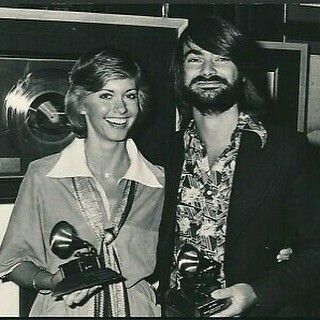
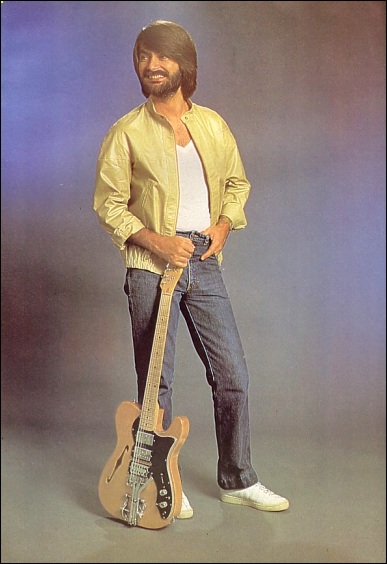
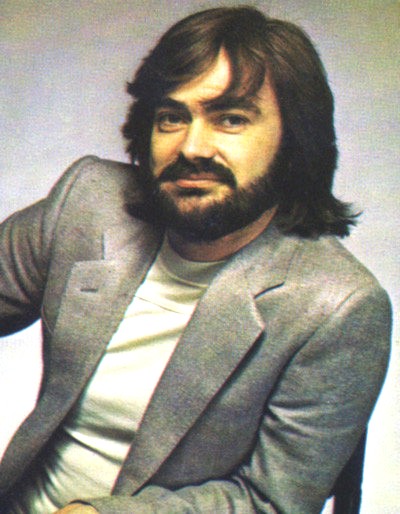
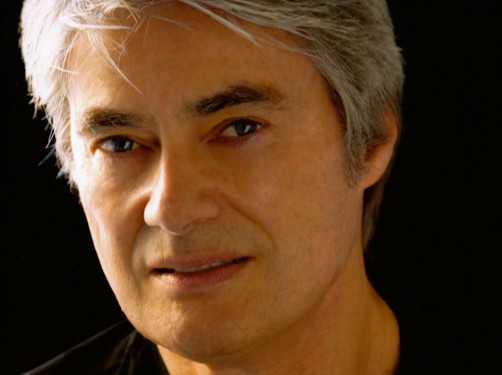
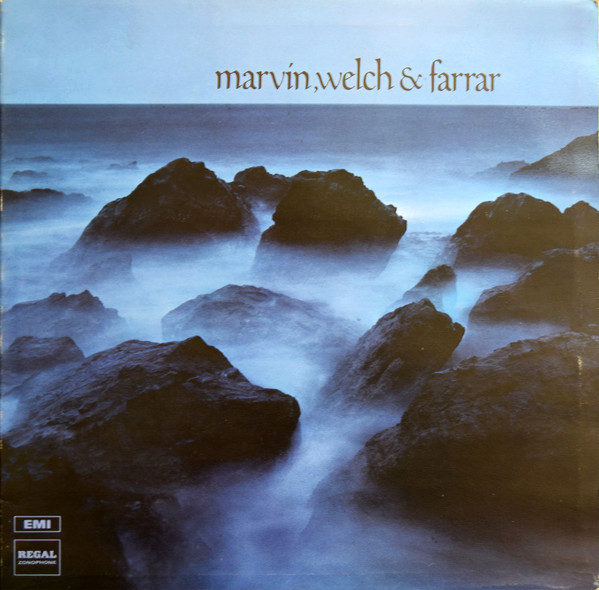
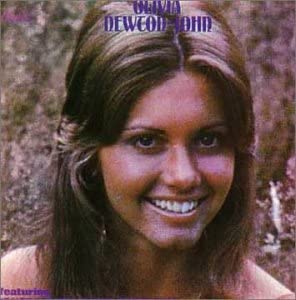
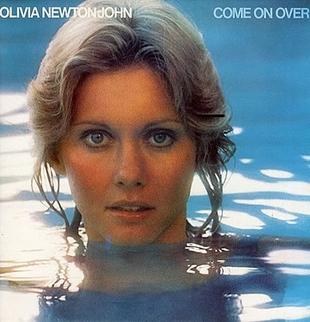
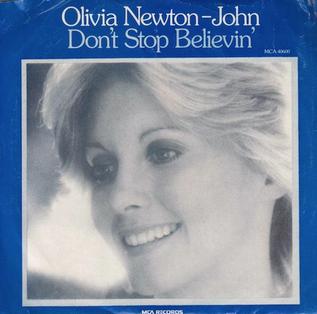
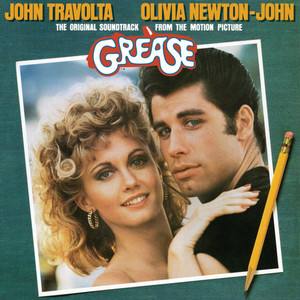
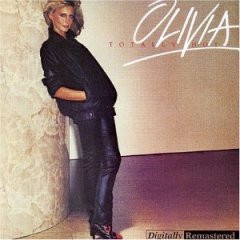
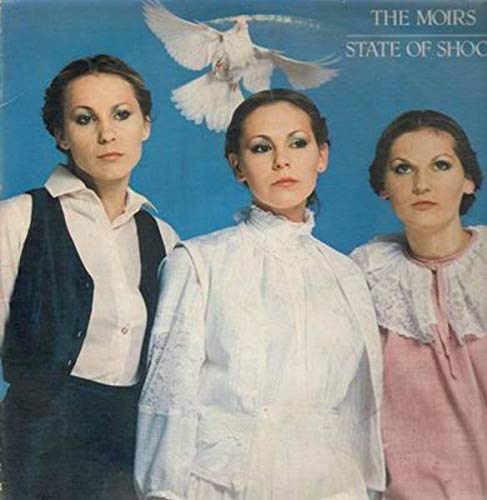
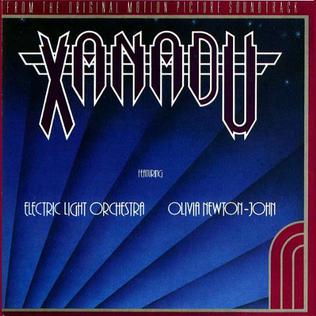
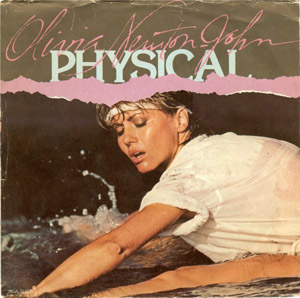
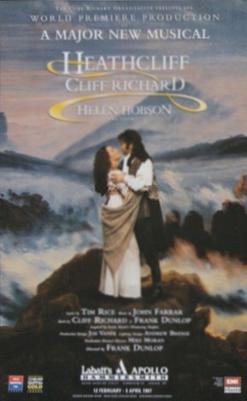
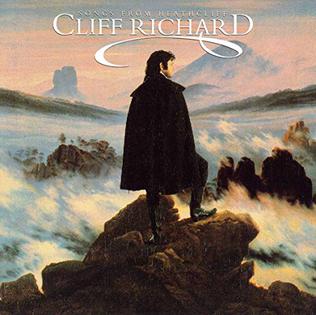

Now here’s a name from my childhood back home in Australia. Thanks for the article which reminds me of Christmas/summer time Down Under and all the amazing music that was created there in the 60s & 70s that so many North Americans never heard.
Fantastic , great….. an All American girl from Australia. She’s had some misfortune as well, a guy that left her high and dry , everyone thought he was dead and he was living in Mexico, I think. She said he would never do that to her, but he did. Then her bout with cancer. She’s a nice girl, all around. No one says a bad word about her. Thanks for such a great write up , Gary.
Much love to you and Birgit
Misty
On Sun, Dec 19, 2021 at 1:58 PM Russ & Gary’s The Best Years of Music wrote:
> RussGary posted: ” By Russ: A multi-talented songwriter and producer, he > worked with Olivia Newton-John from 1971 to 1989 and wrote her number-one > hit singles: “Have You Never Been Mellow” (1975), “You’re the One That I > Want” (1978 duet with John Travolta), “Hopelessly ” >
A well written summary of a very talented guy who moved along with many others of that period developing their own styles and sound..thanks for the effort putting this piece together.